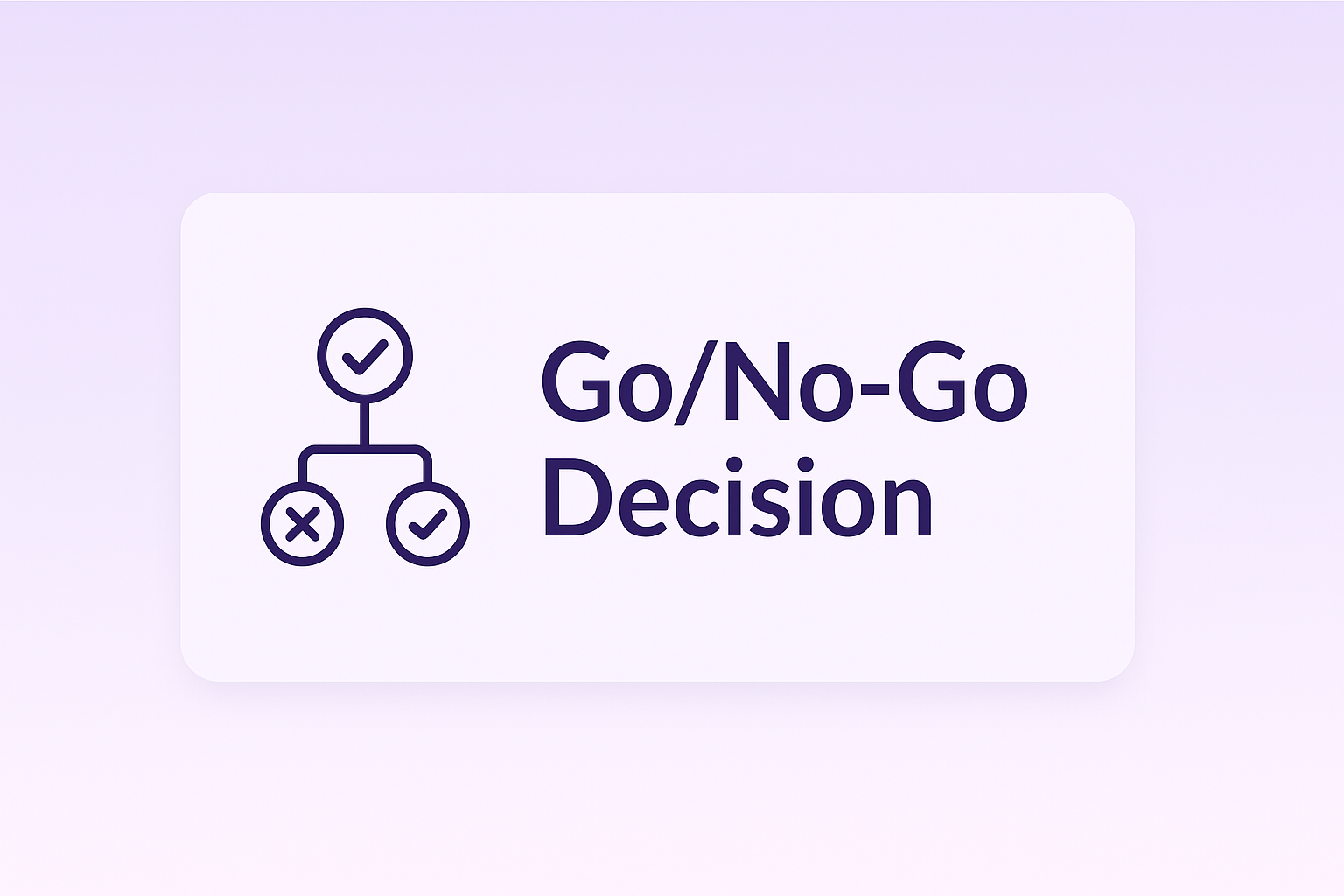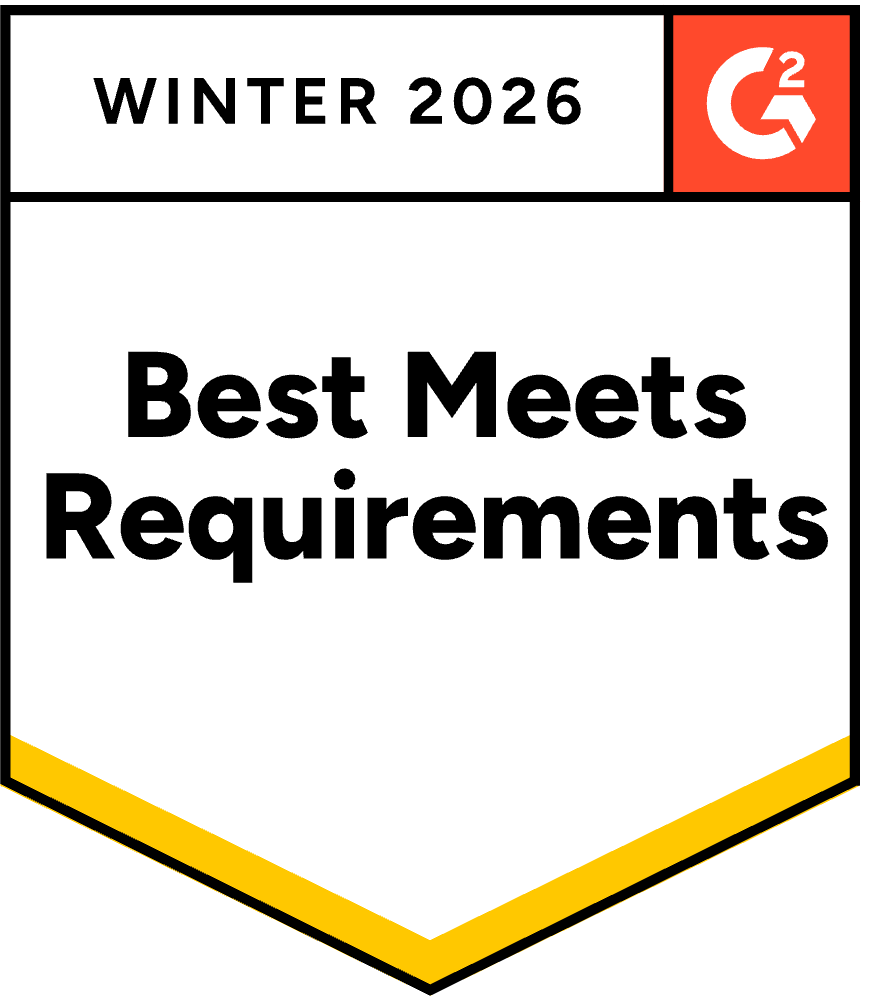What Is a Go/No-Go Decision? Bid/No-Bid Decision Explained

What Is Go/No-Go Decision Making?
Go/No-Go decision making is the process sales, proposal, and solutions engineering teams use to determine whether to pursue or decline a business opportunity—typically an RFP (Request for Proposal) or bid.
It’s a structured qualification step that evaluates factors like profitability, client fit, resource availability, and likelihood of success before investing time in crafting a full RFP response.
Learn how Iris helps automate early-stage RFP qualification in our blog: How to Streamline the RFP Process with AI.
Purpose of a Go/No-Go Decision
The goal of a go/no-go decision is to ensure teams focus only on high-value, winnable opportunities.
Without a qualification step, sales and presales teams can waste hours responding to RFPs that aren’t a good fit or stretch resources too thin.
A formal go/no-go framework helps:
- Prioritize deals with the highest potential ROI.
- Align sales, legal, and technical teams on strategy early.
- Reduce burnout from unqualified pursuits.
- Increase overall RFP win rate by focusing on the right opportunities.
Related reading: Common Mistakes That Lower RFP Win Rates.
Go/No-Go Decision Criteria
When evaluating an opportunity, teams typically consider:
- Strategic Fit: Does the deal align with company goals and target markets?
- Win Probability: Is the client relationship strong enough to compete effectively?
- Resource Availability: Do we have bandwidth to deliver a high-quality proposal?
- Compliance Requirements: Can we meet all mandatory terms, timelines, and formats?
- Profitability: Will pricing, margin, and contract terms support business goals?
Many organizations use a go/no-go checklist or scorecard to guide these assessments, often built directly into their proposal automation tools.
The Go/No-Go Process
- Opportunity Intake
The sales or business development team logs the new opportunity and shares the RFP details. - Initial Review
Proposal managers or presales leads review requirements, timelines, and constraints. - Collaborative Evaluation
Teams assess fit using a scoring matrix or checklist—sometimes through a short meeting or form. - Decision Meeting
Stakeholders determine whether to “Go” (proceed), “No-Go” (decline), or “Conditional Go” (pending clarification). - Documentation
The rationale is recorded for internal tracking and future learning.
Iris integrates go/no-go workflows directly into RFP intake dashboards, allowing faster and more consistent decisions.
Why It Matters
A well-defined go/no-go decision process improves:
- Efficiency: Teams avoid low-value pursuits.
- Collaboration: Everyone aligns on which opportunities to chase.
- Profitability: Resources are allocated where they’ll have the greatest impact.
- Predictability: Historical data helps refine future qualification criteria.
Explore how AI supports this process in RFP Evaluation.
Best Practices
- Use a standardized checklist to remove bias from decisions.
- Revisit criteria quarterly to align with shifting business priorities.
- Involve both sales and delivery teams in decision-making.
- Track “no-go” reasons to identify recurring blockers or market trends.
- Automate opportunity intake and scoring with tools like Iris Pro for consistent qualification.
Go/No-Go Decision – FAQ
Why is a go/no-go decision important?
A go/no-go decision is important because it ensures your team focuses time and resources only on bids that are a good fit and winnable. In other words, this checkpoint helps you avoid chasing RFP opportunities that are unlikely to succeed, saving effort and improving your overall win rate by concentrating on the deals with the highest potential.
When in the RFP process is a go/no-go decision made?
The go/no-go decision is made at the very start of the RFP process, as soon as a new RFP opportunity comes in. Before the team commits time to writing a proposal, they hold a go/no-go review to decide whether to proceed (“Go”) with a response or to decline (“No-Go”) the opportunity.
What criteria are used for a go/no-go decision?
Teams evaluate a few key factors when making a go/no-go choice. Common criteria include strategic fit (does the opportunity align with our business goals?), win probability (do we have a strong chance of winning, perhaps due to past relationship or unique strengths?), resource availability (do we have the time and team to craft a quality proposal by the deadline?), and profitability (would the deal be financially worthwhile if we won it?). If these factors look favorable, the team will decide to “Go” forward; if not, it’s a “No-Go.”
Who participates in a go/no-go decision?
Usually a mix of people from the sales and proposal teams (and sometimes product or delivery leads) are involved in a go/no-go discussion. The sales lead or account manager, along with the proposal manager or presales engineer, will review the opportunity. They may also consult subject matter experts or executives – essentially anyone whose insight is needed to judge the deal’s fit, feasibility, and value – before collectively deciding whether to bid or not.
Is a go/no-go decision the same as a bid/no-bid decision?
Yes. “Go/no-go” and “bid/no-bid” are two terms for the same concept – both refer to the decision of whether your company will pursue (bid on) a given RFP opportunity or decline it. Different organizations may use one term or the other, but they mean the same go or no-go choice.
Can go/no-go decisions be supported by software tools?
Yes. Some RFP management platforms include features to support go/no-go decisions, like built-in qualification checklists or scoring systems. These tools guide teams through the standard criteria (for example, by asking the go/no-go questions within a dashboard) and record the decision, which makes the qualification process faster, more consistent, and easier to track.
Related Glossary Terms
















